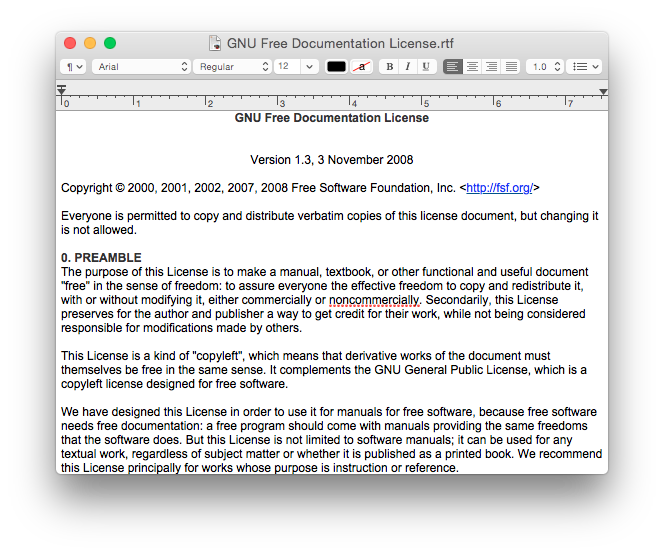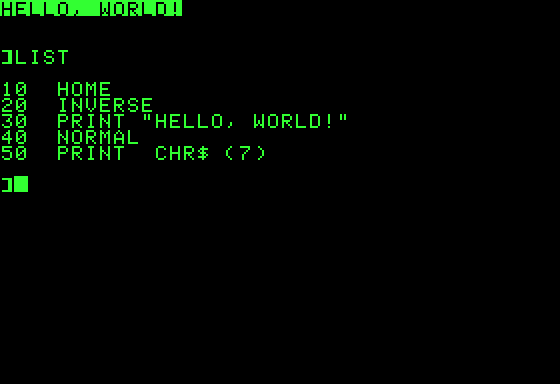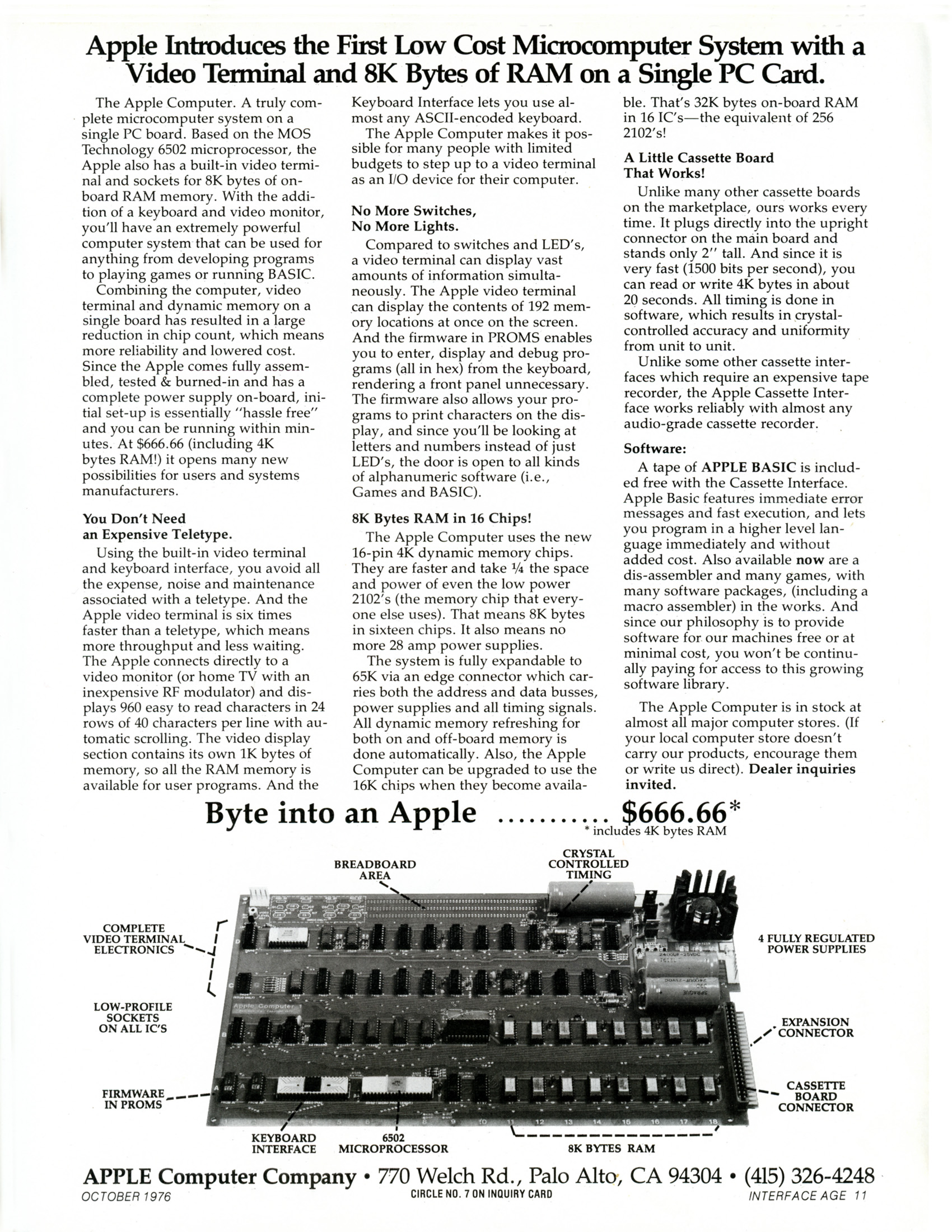|
Apple ProDOS
ProDOS is the name of two similar operating systems for the Apple II series of personal computers. The original ProDOS, renamed ProDOS 8 in version 1.2, is the last official operating system usable by all 8-bit Apple II series computers, and was distributed from 1983 to 1993. The other, ProDOS 16, was a stop-gap solution for the 16-bit Apple II that was replaced by GS/OS within two years. ProDOS was marketed by Apple as meaning Professional Disk Operating System, and became the most popular operating system for the Apple II series of computers 10 months after its release in January 1983. Background ProDOS was released to address shortcomings in the earlier Apple operating system (called simply DOS), which was beginning to show its age. Apple DOS only has built-in support for 5.25" floppy disks and requires patches to use peripheral devices such as hard disk drives and non-Disk-II floppy disk drives, including 3.5" floppy drives. ProDOS adds a standard method of accessing R ... [...More Info...] [...Related Items...] OR: [Wikipedia] [Google] [Baidu] |
Apple Inc
Apple Inc. is an American multinational technology company headquartered in Cupertino, California, United States. Apple is the largest technology company by revenue (totaling in 2021) and, as of June 2022, is the world's biggest company by market capitalization, the fourth-largest personal computer vendor by unit sales and second-largest mobile phone manufacturer. It is one of the Big Five American information technology companies, alongside Alphabet, Amazon, Meta, and Microsoft. Apple was founded as Apple Computer Company on April 1, 1976, by Steve Wozniak, Steve Jobs and Ronald Wayne to develop and sell Wozniak's Apple I personal computer. It was incorporated by Jobs and Wozniak as Apple Computer, Inc. in 1977 and the company's next computer, the Apple II, became a best seller and one of the first mass-produced microcomputers. Apple went public in 1980 to instant financial success. The company developed computers featuring innovative graphical user inter ... [...More Info...] [...Related Items...] OR: [Wikipedia] [Google] [Baidu] |
Floppy Disk
A floppy disk or floppy diskette (casually referred to as a floppy, or a diskette) is an obsolescent type of disk storage composed of a thin and flexible disk of a magnetic storage medium in a square or nearly square plastic enclosure lined with a fabric that removes dust particles from the spinning disk. Floppy disks store digital data which can be read and written when the disk is inserted into a floppy disk drive (FDD) connected to or inside a computer or other device. The first floppy disks, invented and made by IBM, had a disk diameter of . Subsequently, the 5¼-inch and then the 3½-inch became a ubiquitous form of data storage and transfer into the first years of the 21st century. 3½-inch floppy disks can still be used with an external USB floppy disk drive. USB drives for 5¼-inch, 8-inch, and other-size floppy disks are rare to non-existent. Some individuals and organizations continue to use older equipment to read or transfer data from floppy disks. Floppy disk ... [...More Info...] [...Related Items...] OR: [Wikipedia] [Google] [Baidu] |
Central Processing Unit
A central processing unit (CPU), also called a central processor, main processor or just Processor (computing), processor, is the electronic circuitry that executes Instruction (computing), instructions comprising a computer program. The CPU performs basic arithmetic, logic, controlling, and input/output (I/O) operations specified by the instructions in the program. This contrasts with external components such as main memory and I/O circuitry, and specialized processors such as graphics processing units (GPUs). The form, CPU design, design, and implementation of CPUs have changed over time, but their fundamental operation remains almost unchanged. Principal components of a CPU include the arithmetic–logic unit (ALU) that performs arithmetic and logic operations, processor registers that supply operands to the ALU and store the results of ALU operations, and a control unit that orchestrates the #Fetch, fetching (from memory), #Decode, decoding and #Execute, execution (of instruc ... [...More Info...] [...Related Items...] OR: [Wikipedia] [Google] [Baidu] |
WDC 65C02
The Western Design Center (WDC) 65C02 microprocessor is an enhanced CMOS version of the popular nMOS-based 8-bit MOS Technology 6502. The 65C02 fixed several problems in the original 6502 and added some new instructions, but its main feature was greatly lowered power usage, on the order of 10 to 20 times less than the original 6502 running at the same speed. The reduced power consumption made the 65C02 useful in portable computer roles and microcontroller systems in industrial settings. It has been used in some home computers, as well as in embedded applications, including medical-grade implanted devices. Development of the WDC 65C02 began in 1981 with samples released in early 1983. The 65C02 was officially released sometime shortly after. WDC licensed the design to Synertek, NCR, GTE, and Rockwell Semiconductor. Rockwell's primary interest was in the embedded market and asked for several new commands to be added to aid in this role. These were later copied back into the b ... [...More Info...] [...Related Items...] OR: [Wikipedia] [Google] [Baidu] |
Apple IIe
The Apple IIe (styled as Apple //e) is the third model in the Apple II series of personal computers produced by Apple Computer. The ''e'' in the name stands for ''enhanced'', referring to the fact that several popular features were now built-in that were formerly only available as upgrades or add-ons in earlier models. Improved expandability combined with the new features made for a very attractive general-purpose machine to first-time computer shoppers. As the last surviving model of the Apple II computer line before discontinuation, and having been manufactured and sold for nearly 11 years with relatively few changes, the IIe earned the distinction of being the longest-lived computer in Apple's history. History Apple Computer planned to discontinue the Apple II series after the introduction of the Apple III in 1980; the company intended to clearly establish market segmentation by designing the Apple III to appeal to the business market, leaving the Apple II for home and educa ... [...More Info...] [...Related Items...] OR: [Wikipedia] [Google] [Baidu] |
AppleWorks
AppleWorks was an integrated office suite containing a word processor, database, and spreadsheet. It was developed by Rupert Lissner for Apple Computer, originally for the Apple II platform and launched in 1984, and was later reworked for the Macintosh platform. The Apple subsidiary Claris created the new successor ClarisWorks for Apple IIGS (1988), Macintosh (1991), and Windows (1993). Those applications do not share any code with the 8-bit Apple II original. Apple absorbed Claris and the name ClarisWorks was changed to AppleWorks. It was bundled with all consumer-level Macintoshes sold by Apple until its discontinuation. As of 2007, AppleWorks had not been updated in several years and was unable to run on the Intel processors shipping in new Macs. On August 15, 2007, Apple announced AppleWorks had reached end-of-life status, and would no longer be sold. Apple instead promoted its recently launched iWork suite as a replacement, which contains word processing, spreadsheet, and p ... [...More Info...] [...Related Items...] OR: [Wikipedia] [Google] [Baidu] |
Integrated Software
Integrated software is a software for personal computers that combines the most commonly used functions of many productivity software programs into one application. The integrated software genre has been largely overshadowed by fully functional office suites, most notably Microsoft Office, but at one time was considered the "killer application" type responsible for the rise and dominance of the IBM PC in the desktop business computing world. In the early days of the PC before GUIs became common, user interfaces were text-only and were operated mostly by function key and modifier key sequences. Every program used a different set of keystrokes, making it difficult for a user to master more than one or two programs. Programs were loaded from floppy disk, making it very slow and inconvenient to switch between programs and difficult or impossible to exchange data between them (to transfer the results from a spreadsheet to a word processor document for example). In response to these ... [...More Info...] [...Related Items...] OR: [Wikipedia] [Google] [Baidu] |
Filename
A filename or file name is a name used to uniquely identify a computer file in a directory structure. Different file systems impose different restrictions on filename lengths. A filename may (depending on the file system) include: * name – base name of the file * extension (format or extension) – indicates the content of the file (e.g. .txt, .exe, .html, .COM, .c~ etc.) The components required to identify a file by utilities and applications varies across operating systems, as does the syntax and format for a valid filename. Filenames may contain any arbitrary bytes the user chooses. This may include things like a revision or generation number of the file such as computer code, a numerical sequence number (widely used by digital cameras through the ''DCF'' standard), a date and time (widely used by smartphone camera software and for screenshots), and/or a comment such as the name of a subject or a location or any other text to facilitate the searching the files. I ... [...More Info...] [...Related Items...] OR: [Wikipedia] [Google] [Baidu] |
Apple II Plus
The Apple II Plus (stylized as Apple ] or apple plus) is the second model of the Apple II series of personal computers produced by Apple Computer. It was sold from June 1979 to December 1982. Approximately 380,000 II Pluses were sold during its four years in production before being replaced by the IIe in 1983. Features Memory The Apple II Plus shipped with 16 KB, 32 KB or 48 KB of main RAM, expandable to 64 KB by means of the Language Card, an expansion card that could be installed in the computer's slot 0. The Apple's 6502 microprocessor could support a maximum of 64 KB of address space, and a machine with 48 KB RAM reached this limit because of the additional 12 KB of read-only memory and 4 KB of I/O addresses. For this reason, the extra RAM in the language card was bank-switched over the machine's built-in ROM, allowing code loaded into the additional memory to be used as if it actually were ROM. Users could thus load Integer BASIC into ... [...More Info...] [...Related Items...] OR: [Wikipedia] [Google] [Baidu] |
Applesoft BASIC
Applesoft BASIC is a dialect of Microsoft BASIC, developed by Marc McDonald and Ric Weiland, supplied with the Apple II series of computers. It supersedes Integer BASIC and is the BASIC in ROM in all Apple II series computers after the original Apple II model. It is also referred to as FP BASIC (from floating point) because of the Apple DOS command used to invoke it, instead of INT for Integer BASIC. Applesoft BASIC was supplied by Microsoft and its name is derived from the names of both Apple Computer and Microsoft. Apple employees, including Randy Wigginton, adapted Microsoft's interpreter for the Apple II and added several features. The first version of Applesoft was released in 1977 on cassette tape and lacked proper support for high-resolution graphics. Applesoft II, which was made available on cassette and disk and in the ROM of the Apple II Plus and subsequent models, was released in 1978. It is this latter version, which has some syntax differences and support for the ... [...More Info...] [...Related Items...] OR: [Wikipedia] [Google] [Baidu] |
Integer BASIC
Integer BASIC is a BASIC interpreter written by Steve Wozniak for the Apple I and Apple II computers. Originally available on cassette for the Apple I in 1976, then included in ROM on the Apple II from its release in 1977, it was the first version of BASIC used by many early home computer owners. The only numeric data type was the integer; floating-point numbers were not supported. Using integers allowed numbers to be stored in a much more compact 16-bit format that could be more rapidly read and processed than the 32- or 40-bit floating-point formats found in most BASICs of the era. This made it so fast that Bill Gates complained when it outperformed Microsoft BASIC in benchmarks. However, this also limited its applicability as a general-purpose language. Another difference with other BASICs of the era is that Integer BASIC treated strings as arrays of characters, similar to the system in C or Fortran 77. Substrings were accessed using array slicing rather than string fu ... [...More Info...] [...Related Items...] OR: [Wikipedia] [Google] [Baidu] |
Apple III
The Apple III (styled as apple ///) is a business-oriented personal computer produced by Apple Computer and released in 1980. Running the Apple SOS operating system, it was intended as the successor to the Apple II series, but was largely considered a failure in the market. It was designed to provide key features business users wanted in a personal computer: a true typewriter-style upper/lowercase keyboard (the Apple II only supported uppercase) and an 80-column display. Work on the Apple III started in late 1978 under the guidance of Dr. Wendell Sander. It had the internal code name of "Sara", named after Sander's daughter. The system was announced on May 19, 1980 and released in late November that year. Serious stability issues required a design overhaul and a recall of the first 14,000 machines produced. The Apple III was formally reintroduced on November 9, 1981. Damage to the computer's reputation had already been done, however, and it failed to do well commercially. Deve ... [...More Info...] [...Related Items...] OR: [Wikipedia] [Google] [Baidu] |








